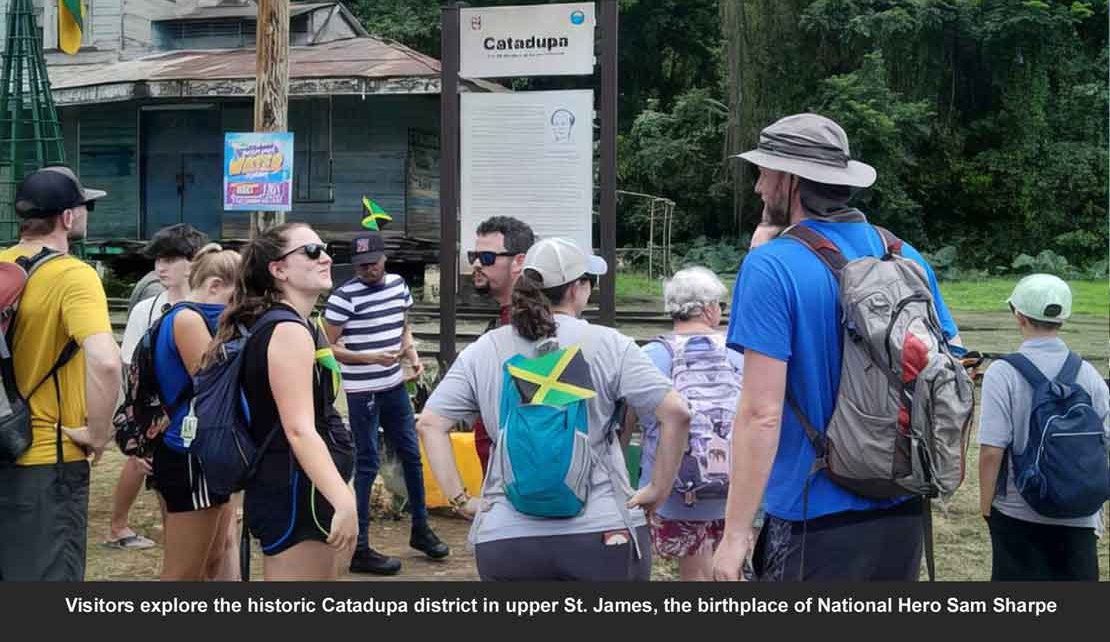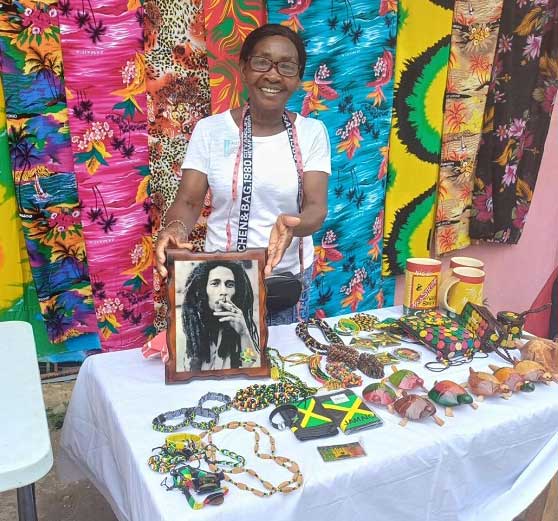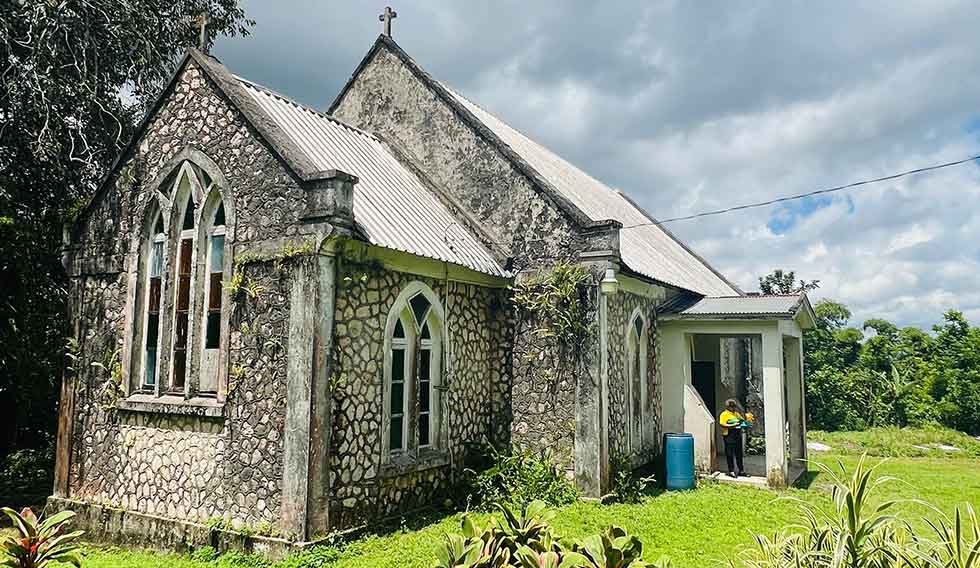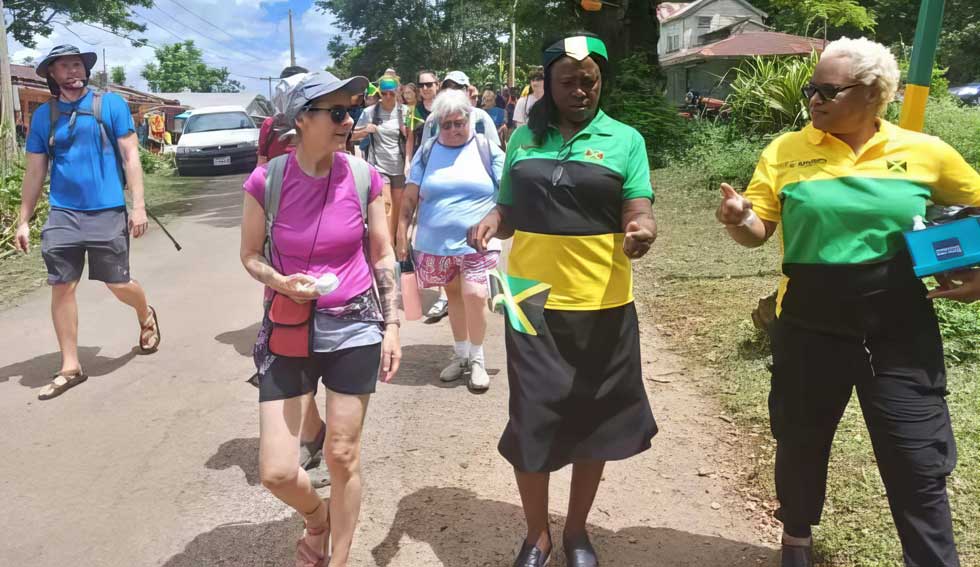JAMAICA | Catadupa's Community-Driven Tourism Initiative: Reviving a Rich Tourism Legacy

CATADUPA, St. James, August 10, 2024 - In the heart of St. James, Jamaica, the historic community of Catadupa has breathed new life into its tourism potential, drawing on a rich legacy that dates back decades.
The Appleton Estate Tourist Train: A Lost Lifeline
The recent launch of the Catadupa Heritage and Eco Tour is not just a new venture, but a renaissance of a once-thriving tourist engagement that was abruptly halted in the early 1990s.
The roots of Catadupa's tourism aspirations trace back to a unique attraction that once brought prosperity to the community. Until 1992, the Appleton Estate tourist train, en route to the famous rum factory in St. Elizabeth made a pivotal stop in Catadupa. This wasn't just a brief halt; it was a lifeline for the local economy.

This symbiotic relationship between the train's passengers and the skilled craftspeople of Catadupa created a thriving micro-economy.
The train's regular visits allowed local artisans to showcase and sell their crafts directly to tourists. Moreover, it facilitated a unique made-to-order clothing service, where visitors could commission bespoke garments on their outward journey and collect them on their return.
From Setback to Comeback

However, the entrepreneurial spirit that had flourished during those years remained dormant, waiting for an opportunity to resurge.
It was this dormant potential that the community, led by visionary members like Claudette Glegg, tapped into when conceptualizing the Catadupa Heritage and Eco Tour.
The new initiative isn't just a tourism project; it's a revival and reimagining of a lost economic lifeline.
Community at the Forefront
Drawing inspiration from their most famous son, National Hero Sam Sharpe, and their own history of engaging with tourists, the people of Catadupa decided to chart their own path to economic revival.
The community's benevolent association evolved into an economic development organization, recognizing the untapped potential in their rich cultural heritage and natural beauty.
A Vision Takes Shape

"Our vision is to capitalize on the rich legacy of the Right Excellent Samuel Sharpe and revive the spirit of engagement we once had with the tourist train," Glegg explained.
"This initiative will empower our community, providing employment opportunities and showcasing the talents of our local craftspeople, just as we did in the past."
Building on Historical Foundations
The community's approach was rooted in a deep understanding of their historical significance, not just as the birthplace of Sam Sharpe, but as a once-thriving hub of tourist engagement.
This connection to the past, combined with the area's link to the Emancipation War of 1831-32, provided a solid foundation for the new tourism initiative.
Catadupa’s recorded history dates as far back as 1794 when it was the property of slave owner Nicholas Trout. The nearby Croydon in the Mountains Plantation, where Samuel Sharpe was born, was a vibrant tourist attraction is now back in operation, having temporarily ceased operation due to the COVID-19 pandemic.
Long-Term Support and Vision
Member of Parliament for the area, St James Southern Homer Davis, underscored the magnitude of the initiative in boosting the local economy.
“The launch of this heritage tour could not happen at a better time, with the boom in tourism and the increasing demand for rural and heritage attractions. It’s not all about the hotels.
To truly experience Jamaica and its culture, you have to visit areas like Catadupa,” Davis said.
However, the seeds of this project were planted, not in 2022, but years ago, thanks in part to the efforts of retired Member of Parliament Derrick Kellier.

His endeavors led to the creation of the Tulloch Castle memorial, which included an amphitheater dedicated to hosting annual Sam Sharpe commemoration events.
It was at Tulloch Castle, where the first flames of the revolution were ignited, marking the beginning of a war that would eventually alter the course of history.
Kellier’s relentless advocacy resulted in the official recognition of December 27 as Sam Sharpe Day in 2020, a day now fully state-sponsored.
A Model of Community Empowerment and Revival
The Catadupa Heritage and Eco Tour, now scheduled to run every other Wednesday, represents more than just a tourist attraction.
It's a model of how communities can mobilize their resources, history, and culture to create sustainable economic opportunities, even in the face of setbacks.
The tour offers visitors a chance to experience breathtaking views, cultural performances, and local cuisine.
More importantly, it provides community members with opportunities to showcase their talents and sell their crafts, rekindling the spirit of the tourist train era in a new, community-driven format.
Looking to the Future

Their success demonstrates that with strong leadership, community organization, and a clear vision rooted in historical context, even small communities can revive and reinvent their economic opportunities.
The story of Catadupa's tourism initiative is not just about attracting visitors; it's about a community coming together, recognizing its worth, and taking control of its economic destiny by building on its past successes.
In fact, the community members are eagerly awaiting the time when, as anticipated, the Catadupa project can be developed by TPDCo into a full scale artisan village where members of the community will be able to express their full potential and broaden their economic horizons.
Where the resident artisans and craftsmen can showcase their skills and creations, without having to go to Falmouth or Montego Bay, and providing visitors with the chance to purchase unique souvenirs and mementos that capture the essence of Jamaican artistry, from intricately woven baskets to vibrant paintings and handmade jewelry, the village will be a treasure trove of one-of-a-kind items that reflect the creativity and talent of Jamaican artisans.
It's a powerful reminder of what can be achieved when a community decides to write its own story, turning the page from a chapter of loss to one of renewed prosperity.
Jamaica's first artisan village
Jamaica’s first artisan village in Falmouth, Trelawny, was constructed at a cost of over $700 million and is situated at the former Hampden Wharf, strategically located along the corridor leading to the Falmouth cruise ship pier in Trelawny.
Designed to be a hub for authentic Jamaican products, the state-of-the-art facility is themed to tell the story of Falmouth, and showcase a diverse array of offerings, ranging from unique craft and souvenir items to traditional cuisine as well as lively entertainment – all under one roof.
-30-
